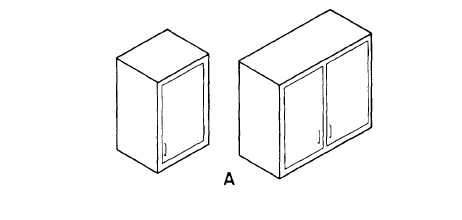shows the method of shaping the end of the abutting member to tit the face of the other member. First, saw off the end of the abutting member square, as you would for an ordinary butt joint between ordinary flat-faced members. Then, miter the end to 45°, as shown in the first and second views of figure 3-65. Set the coping saw at the top of the line of the miter cut, hold the saw at 90° to the lengthwise axis of the piece, and saw off the segment shown in the third view, following closely the face line left by the 45° miter cut. The end of the abutting member will then match the face of the other member, as shown in the third view. A joint made in this reamer is called a coping joint. You will have to cut coping joints on a large variety of moldings. Figure 3-66 shows the simplest and most common moldings and trims used in woodworking.
MILLWORK
LEARNING OBJECTIVE: Upon completing this section, you should be able to recognize the various types of millwork products and procedures.
As a general term, millwork usually embraces most wood products and components that require manufacturing. It not only includes the interior trim and doors, but also kitchen cabinets and similar units. Most of these units are produced in a millwork manu- facturing plant and are ready to install. Figure 3-67 is an example of the dimensions you might be working with.
BUILDING CABINETS IN PLACE
One of the most common ways of building cabinets, such as those shown in figure 3-68, is to cut


Figure 3-68.-Typical kitchen cabinets: wall (view A) and base (view B).
Continue Reading